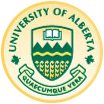 |
|
||||
Org: Stephen Anco (Brock), George Bluman (UBC) and Alexei Cheviakov (Saskatchewan)
[PDF]
- SAJID ALI, SEECS, National University of Sciences and Technology, Islamabad, Pakistan
Symmetry Analysis and Exact Solutions of Semilinear Heat Flow in Multi-Dimensions [PDF]
-
A symmetry group method is used to obtain exact solutions for a semilinear radial heat equation in $n>1$ dimensions with a general power nonlinearity. The method involves an ansatz technique to solve an equivalent first-order PDE system of similarity variables given by group foliations of this heat equation, using its admitted group of scaling symmetries. This yields explicit similarity solutions as well as other explicit solutions of a more general (non-similarity) form. These solutions have interesting analytical behavior connected with blow up and dispersion. In contrast, standard similarity reduction of this heat equation gives a semilinear ODE that cannot be explicitly solved by familiar integration technique such as point symmetry reduction or integration factors. This is a joint work with Prof SC Anco and Prof T Wolf.
- STEPHEN ANCO, Brock University
New conserved integrals for Euler's equations in $n>1$ spatial dimensions [PDF]
-
Euler's equations are the governing equations of inviscid fluid flow.
In this talk, new conserved integrals generalizing Kelvin's circulation
are presented for Euler's equations in $n>1$ spatial dimensions.
Circulation is defined by the integral of the fluid velocity
around any closed curve and is known to be a constant of motion
when the curve is transported by the fluid in the case of
either incompressible or compressible flows in $n\leq3$ dimensions.
The new conserved integrals hold for both incompressible and compressible
fluids in $n>1$ dimensions and are defined similarly to helicity in terms of
the fluid velocity and its curl on any closed surface of odd dimension
less than $n$ which is transported by the fluid.
These integrals yield new circulatory constants of motion for inviscid
fluid flow in all dimensions $n>3$
and reduce to the circulation in $n=2$ and $n=3$ dimensions.
The corresponding local conservation laws are shown to have
an equivalent formulation as differential $p$-forms (with $p=$ $1$,$3$,...,$2[n/2]-1$)
whose convective Lie derivative along the fluid streamlines is equal to a
closed $p$-form when evaluated for all solutions of Euler's equations.
- ALEXEI CHEVIAKOV, University of Saskatchewan
On Nonlocally Related PDE Systems in Multi-dimensions [PDF]
-
For many systems of partial differential equations (PDEs), including nonlinear ones, one can construct nonlocally related PDE systems. In recent years, such nonlocally related systems have proven to be useful in applications. In particular, they have yielded systematically nonlocal symmetries, nonlocal conservation laws, non-invertible linearizations, and new exact solutions for many different PDE systems of interest.
However, the overwhelming majority of new results and theoretical understanding pertain only to PDE systems with two independent variables. The situation for PDE systems with more than two independent variables turns out to be much more complicated due to gauge freedom relating potential variables.
We present a systematic treatment of nonlocally related PDE systems with $n\geq 3$ independent variables, and compute new examples of nonlocal symmetries, nonlocal conservation laws, and exact solutions for such systems.
This is joint work with George Bluman (UBC).
- RAOUF DRIDI, UBC
- CHANGZHENG QU, Northwest University
Conditional Lie Backlund Symmetries and Invariant subspaces of nonlinear parabolic equations [PDF]
- CHANGZHENG QU, Northwest University
-
In this talk, we shall discuss the conditional Lie-Backlund symmetries and invariant subspaces of nonlinear parabolic equations. The realtionship among conditional Lie-Backlund symmetry, geometric property and Harnack type inequality is investigated. Furthermore, the dimension of invariant subspaces admitted by multi-component nonlinear vector differential operators is estimated.
- THOMAS WOLF, Brock University
Integrable non-abelian Laurent ODEs [PDF]
-
After giving examples of integrable matrix homogeneous ODE-systems we discuss
non-abelian Laurent polynomials and an ODE-system of Kontsevich which we study
for its integrability. As a step towards the classification of such ODE
systems we investigate Laurent deformations of the integrable
Mikhailov-Sokolov system $u_t = uv, \ v_t = - vu$. All such deformations of
inhomogeneous degree 2 with symmetries of inhomogeneous degree 4 have been
computed.
The symmetry investigation of the Kontsevich system that was performed includes the determination of Lax Pairs of which 10 were found, each providing an infinite sequence of conservation laws and of symmetries. It also includes the direct computation of all inhomogeneous symmetries up to degree 15. The corresponding linear algebraic systems that have been solved contain up to 300 million equations for 59 million undetermined coefficients.








